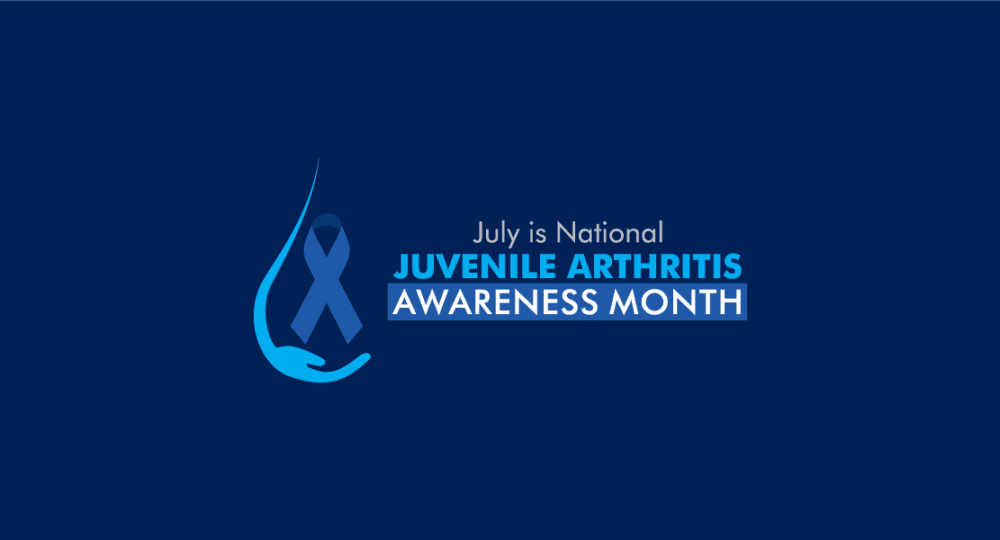There are around 300,000 children in the US with some form of arthritis. Many people think of arthritis as an adult or elderly condition. July has been named Juvenile Arthritis Awareness Month with the goal of raising awareness that kids can have arthritis too.
The term “arthritis” refers to inflammation of the joints. There are more than 100 different types of arthritis and related conditions. Juvenile arthritis (JA) is not a specific disease in and of itself, but an umbrella term used to describe many autoimmune and inflammatory conditions in children less than 16 years old that cause arthritis. In most cases of JA, joint inflammation causes pain, swelling, warmth, stiffness, and loss of motion in varying degrees.
Some common conditions associated with JA include:
- Juvenile idiopathic arthritis (JIA; formerly known as juvenile rheumatoid arthritis)
- The most common form of juvenile arthritis.
- Occurs when the body’s immune system attacks its own cells and tissues.
- Involves swelling in one or more joints lasting at least 6 weeks.
- Subtypes are defined by the number of joints affected and if fever and rashes are prominent features.
- Often causes muscle and soft tissue tightening, bone erosion, joint misalignment, and changes in growth patterns.
- Juvenile dermatomyositis
- An inflammatory disease that causes muscle weakness and a skin rash on the eyelids and knuckles.
- Can result in muscle weakness in the trunk, shoulders, and upper legs.
- 1 of every 5 children with this also have arthritis.
- Juvenile lupus
- An autoimmune disease, which involves the immune system attacking healthy cells in the body.
- Can affect the joints, skin, kidneys, blood, and other areas of the body.
- Symptoms include a butterfly-shaped rash that bridges the nose and cheeks, a scaly type of rash on the face or neck, sensitivity to sunlight, and pain in the chest and joints.
- Juvenile scleroderma
- A group of conditions that cause the skin to tighten and harden.
- Can be localized (primarily in the skin) or systemic (involving other organs).
- The localized form is more common in children.
- Kawasaki disease
- Primarily affects infants and young children.
- Involves inflammation of the blood vessels which can lead to cardiac complications.
- Symptoms often include a high fever, a rash and/or swelling around the hands and feet, red eyes, lips, and tongue, and swollen lymph nodes.
- Mixed connective tissue disease
- May include features of arthritis, lupus, and scleroderma.
- Fibromyalgia
- A chronic pain syndrome which can cause stiffness and aching along with fatigue and poor sleep.
No specific cause of most forms of juvenile arthritis has been found. Some research has suggested a genetic predisposition to develop JA when triggered by other factors.
There is no cure for juvenile idiopathic arthritis. It remains a chronic condition, but with early diagnosis and treatment, remission is possible. The goal of treatment is to relieve inflammation, control pain, and improve quality of life. Most treatment plans involve a combination of medication, physical activity, eye care (because inflammation of the eyes is commonly involved), and healthy eating. Self-care, healthy lifestyle choices, and complementary therapies are also important to managing the pain and stress of arthritis.
—
Resources:
American College of Rheumatology
Graphic by Vectoraart on iStock





